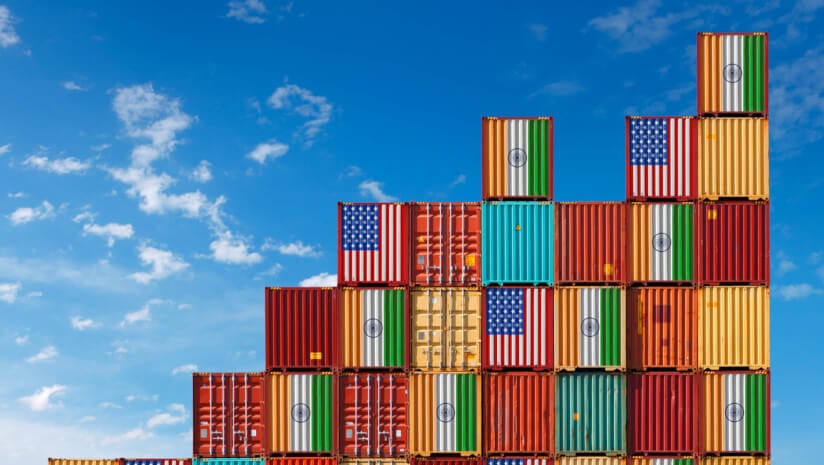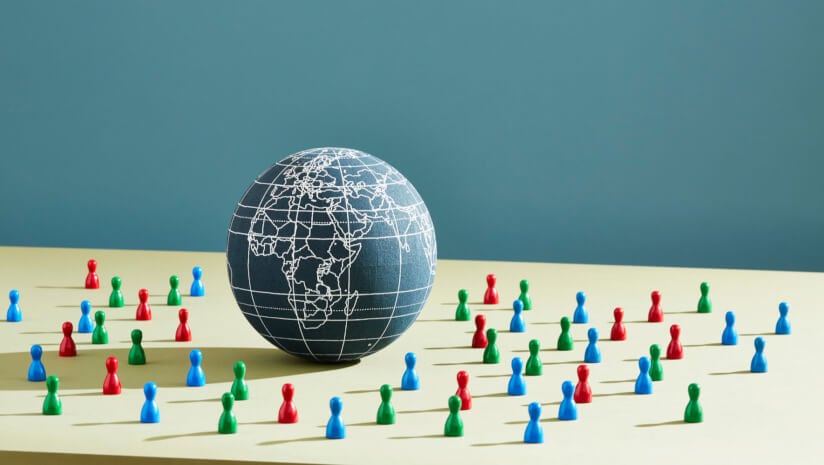India’s trade relationship with the United States is an important one, accounting for 21% of India’s total exports, and this includes botanical ingredients. Although the U.S. Supreme Court may nullify Trump’s tariff actions, India’s botanical industry remains vulnerable to geopolitical tensions with the United States.
Dr. Anand Swaroop, PhD, is founder and president of India-based nutritional ingredient supplier Cepham.
“The botanical supply chain has survived many crises, but this one’s different,” he said.
Dr. Swaroop spoke with NutraIngredients about the recent tariffs and what they mean for ingredients like turmeric, ashwagandha and boswellia.
NutraIngredients: How sensitive are botanical supply chains in general to disruption?
Anand Swaroop (AS): Botanical supply chains are extremely vulnerable due to their reliance on geographically concentrated harvest and production. The botanical products are dependent on annual growing cycles, sometimes just one harvest per year. Climate disruption has made traditional harvesting calendars obsolete. Beyond weather, there’s the farmer economics angle, when certain crops become more profitable due to demand shifts, farmers pivot their planting decisions, creating unexpected shortages elsewhere in the supply chain.
Geographic concentration, climate change and unsustainable harvesting practices further exacerbate these issues, threatening the long-term availability of critical botanical ingredients.

NI: In your time as a CEO and as an executive, have you ever experienced this kind of disruptive trade between the U.S. and India? Does anything else come close?
AS: The current 50% tariff on botanical products from India is unprecedented, and it might be one of the industry’s “Black Swan” moments. The closest parallel was the withdrawal of India’s GSP (Generalized System of Preferences) status in 2019, which had a 3% to 7% duty impact. Even the COVID-19 pandemic, which caused significant disruptions, was more manageable because everyone faced the same challenges. The unique aspect of this tariff is its universality and immediacy, with no alternative source for key botanicals like turmeric, ashwagandha and boswellia. These plants are tied to Indian soil, climate and centuries of cultivation expertise.
NI: How does the back and forth between India and the United States regarding tariffs hinder the supplement trade in both the short and long term?
AS: In the short term, the tariff ping-pong creates chaos, with retaliation cycles, contract disputes, inventory issues and regulatory harassment. In the long term, it causes investment paralysis, supply chain inefficiencies, innovation destruction and relationship breakdowns. The compound effect of these issues leads to a quality race to the bottom, financial system breakdown and talent exodus. Even if tariffs are removed, the damage persists, with stranded assets, regulatory scrutiny and permanent market restructuring.
NI: What will the cost burden be for botanicals if Trump’s tariffs continue to be in place for the next six months or even a year on Indian goods? Do you think resolution will come sooner than that based on how the Trump administration has enacted and disbanded tariffs on other countries during the year?
AS: If the tariffs continue, the cost burden will escalate significantly. In the first three months, companies might blend old and new inventory to create an illusion of stability. By month four to six, raw material costs will increase by 50%, finished extract costs by 35% to 40%, and retail prices by 25 to 30%. If tariffs persist for 7 to 12 months, the industry will see consolidation, permanent price increases and a shift away from Indian botanicals.
Based on Trump’s pattern with other countries in 2025, I’m planning for 9 to 12 months of full tariffs, then permanent 15% to 20% duties. The Mexico tariffs lasted 11 days after negotiations. China got hit with tariffs after 60 days of talks. Canada’s quick-strike lasted 72 hours, but India is different. This isn’t about trade deficits, it’s about India buying Russian oil. Until those changes come into effect, which is unlikely given the recent posturing by BRICS, these tariffs remain Trump’s leverage. There’s no powerful U.S. constituency lobbying for botanical extracts like there was for other products. Resolution is unlikely before Q2 2026 due to geopolitical factors and lack of a powerful U.S. constituency lobbying for India.
NI: Do you still think consumers are willing to pay more for supplements despite the ongoing trade disputes? Are there prices that they are not willing to pay?
AS: Consumer willingness to pay more for supplements is segmented. Up to 20% price increases result in a small drop in volume, but at 25% to 30%, consumers start trading down to cheaper alternatives. Above 35% to 40%, entire categories die as consumers abandon them. The ‘Wellness Wealthy’ (earning $150,000+) segment is less price-sensitive, while the “Health Maintenance Middle”($80,000 to $100,000) and “Coupon Crusaders” (less than $70,000) are more likely to reduce or stop purchases. Bulk buying and acceptance of inferior alternatives might increase, and younger consumers may shift to synthetic alternatives of botanicals.
NI: Will these tariff policies lead to adulteration of products?
AS: Yes, the economic pressure from tariffs creates a perfect storm for quality compromise. Importers demanding lower prices from Indian suppliers might lead to economic adulteration, species substitution and concentration manipulation. The testing gap problem exacerbates this issue, as many companies cannot afford advanced testing. Historical precedent shows a significant increase in FDA import alerts for adulterated products following tariff implementation.
NI: How will quality and trust suffer because of these tariffs?
AS: There’s inevitable pressure to find cheaper raw materials, which could erode product efficacy. Some suppliers might try profiting more under the guise of tariffs, breeding distrust. There are recent price hikes by third-party testing labs in the United States, making quality verification harder for smaller companies.
The reality is these tariffs are here. As we face them, the industry needs to stand together regardless of our unique roles. We need to maintain the highest quality and transparency possible. India and the United States need each other for success in this space.
NI: Anything else you would like to add?
AS: The botanical supply chain has survived many crises, but this one’s different. It’s not just about economics; it’s about maintaining the integrity of traditional medicine in modern commerce. Whether we emerge stronger or permanently damaged depends on choices made in these critical months ahead.
The companies that survive with integrity will have earned something money can’t buy. We’re not just selling supplements. We’re stewarding healing traditions connecting America to botanical wisdom worldwide. These tariffs aren’t raising prices, they’re severing those connections, forcing adulterations that betray that wisdom and destroying consumer trust that took decades to build.



